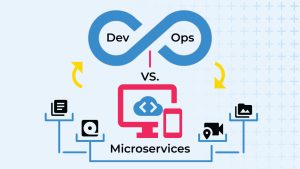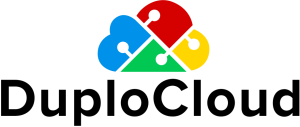Most startups and mid-sized companies don’t have large DevOps teams. Instead, you’ve got one or two specialists wearing multiple hats. Or, you’ve got developers picking up ops work on the side.
On paper, your company may look lean.
In reality, the hidden costs of infrastructure toil quietly drain half a million dollars a year.
What’s the toil? Oh, you know, just lost developer hours, firefighting, audits, tool sprawl… and so on.
For companies with 50 to 200 employees, conservative math has your losses at around $500K annually.
In practice, DORA’s research shows that when ops bottlenecks increase, software delivery performance and stability both degrade.
So the true figure is likely much higher.
The good news: with a solid platform foundation and AI-assisted workflows, you can turn those hidden DevOps costs into fuel for growth.
Key Takeaways
- Hidden DevOps costs easily exceed $500K annually for a mid-sized tech company. It often creeps even higher once you include opportunity costs and technical debt.
- AI-enabled automation transforms those costs into gains. This reduces toil, shortens MTTR, automates audit compliance, and consolidates tools.
- Buying a unified platform beats building your own stack. You save on headcount, maintenance, and integrations while gaining built-in compliance and expert support.
What are these hidden devops costs?
| Category | Assumption | Annual Cost (USD) |
| Developers are losing time to ops toil | 4 developers × 5 hrs/week @ $90/hr | $93,600 |
| Incident response & firefighting | 300 hours/year @ $90/hr | $27,000 |
| Downtime business impact | 15 hours/year @ $3K/hr | $45,000 |
| Audit prep & compliance paperwork | 200 hours/year @ $90/hr | $18,000 |
| Tool sprawl maintenance overhead | 0.2 FTE DevOps engineer | $35,000 |
| Attrition from burnout/on-call | One replacement every 18 months | $70,000 |
| Subtotal: Hidden Costs | $288,600 |
| Category | Assumption | Annual Cost (USD) |
| DevOps engineer salaries | 2.5 FTE average @ $175K | $175,000 |
| Observability & monitoring stack | DataDog, PagerDuty, etc. | $35,000 |
| Compliance & security tools | SOC 2, vulnerability scanning | $28,000 |
| Subtotal: Visible Costs | $238,000 |
Here’s a conservative breakdown for a 50-200 person tech company with 2-4 DevOps engineers:
Add the visible stack, DevOps salaries, monitoring, compliance tools, CI/CD, and you’re looking at another $238K. This brings the total annual DevOps burden to ≈ $526,600.
And that’s conservative.
The complexity it doesn’t take into account is:
- Opportunity cost: Features are delayed because developers are fighting for infrastructure.
- Customer churn: From incidents and slower velocity.
- Security incidents and issues: SMB breaches average $150K-$4M.
- Failed migration practices: Projects that slip by months.
- Market salaries: Senior engineers in tech hubs cost $100-$150/hour, not $90.
For far too many growing companies, the true all-in number is closer to $700K-$900K.
Per year.
Those are wasted resources that could be used for essential tasks and development.
Build vs Buy: what the board actually sees
On the surface, “building” with point tools looks cheaper. But once you add the glue work operations, developer context-switching, and compounding tech debt, the hidden costs swamp the savings.
“Buying” a platform foundation flips the equation:
- Automates the essentials: Networking, CI/CD, observability, and security built in.
- Bakes in compliance: SOC 2, HIPAA, PCI mapped directly to controls so audits don’t hijack sprints.
- Reduces tool sprawl: One platform replaces 6-10 point solutions.
- Provides expert leverage management: Senior DevOps talent on-demand, without adding headcount.
This is precisely what you get with DevOps-as-a-Service via DuploCloud.
It also complements Adaptive Platform Engineering solutions that let you scale your internal platform without rebuilding the wheel.
How AI helps small teams punch above their weight
DORA’s 2024/25 research metrics show teams that adopt AI responsibly see both throughput and stability improve. You’ll get faster deployments, shorter MTTR, and lower change failure rates in the process.
Of course, AI doesn’t replace your DevOps. What it does is multiply your small team’s impact and increase efficiency.
Here’s how:
- Shrink toil by 40-60%
- AI agents handle noisy alerts, flaky pipelines, and restarts.
- Reclaims 400-600 developer hours/year.
- Value: $36K-$54K back into feature delivery.
- AI agents handle noisy alerts, flaky pipelines, and restarts.
- Faster incident recovery
- AI-guided remediation shortens MTTR.
- Case studies show 25-50% reductions in downtime duration.
- Value: $11K-$22K savings annually.
- AI-guided remediation shortens MTTR.
- Audit autopilot
- Evidence captured at deploy time.
- Turns weeks of manual prep into hours.
- Value: $10K-$15K saved/year.
- Evidence captured at deploy time.
- Tool consolidation
- Unified observability + AI-driven analysis replaces multiple vendors.
- Reduces licensing and 0.15 FTE in glue work.
- Value: $40K-$55K annually.
- Unified observability + AI-driven analysis replaces multiple vendors.
For a sub-200-person company, this is like doubling your DevOps team without adding $350K+ in headcount.
If you’d like to dive deeper into how AI workflows apply to DevOps, check “A Practical Framework for AI-powered DevOps Workflows.”
The easy button
DevOps Automation gives you:
- Platform foundation in days, not months: Deploy to AWS, Azure, or GCP with compliance built in.
- No-code infrastructure: Developers self-serve without learning Terraform or K8s internals.
- Built-in everything: CI/CD, observability, networking, secrets, and compliance baked in.
- AI co-pilot: Cost optimization, remediation, and operational insights out of the box.
- Expert support: Hands-on onboarding plus access to senior DevOps talent you couldn’t otherwise afford.
What this means:
- Features ship 30-40% faster.
- Small ops teams stop firefighting.
- Compliance audits take days instead of weeks.
- CFOs see $300K-$500K back in budget, conservatively.
DuploCloud’s Cloud Services Platform makes this possible via templated provisioning, just-in-time access, and embedded compliance.
And as you scale, Cloud Migration Services can help you shift workloads into your new platform with confidence and minimal friction.
DuploCloud Helps You Eliminate Hidden DevOps Costs
In conclusion, you already know that for tech companies with 50-200 employees, the DevOps tax is real. And that hidden cost is really expensive.
At $500K+ every single year, it’s one of the largest hidden drains on your overall growth.
It’s a technology waste.
Sadly, the math is indeed mathing:
- Without a platform: You lose $500K+ to toil, tool sprawl, and firefighting.
- With DuploCloud + AI: You get that $500K redirected into shipping features. Your customers are thrilled, and you can start scaling safely.
The fastest way to stop the leak is to build on a DevOps Automation platform. From there, you layer AI on top. That way, you scale like a company twice your size. And you’ll never have to worry about the headcount or toolchain sprawl.
It’s time to get rid of those hidden DevOps costs.
Book your demo today and get a custom DevOps cost assessment. So you can make an informed decision for your systems.
FAQs
How does DuploCloud compare to piecing together point tools plus custom scripts?
Custom scripts and point tools each add glue code, maintenance overhead, and hidden debt. With DuploCloud, you get a unified platform. There, infrastructure, CI/CD, observability, and compliance are all integrated and maintained.
Can AI really be trusted in production pipelines?
Absolutely… when it’s configured properly with guardrails. At DuploCloud, our AI agents always operate with human oversight. This allows for in-loop checks and reversible changes. Over time, your confidence in AI will build as suggestions and remediations become more accurate.
Does DuploCloud support multiple clouds (AWS, Azure, GCP)?
Of course! DuploCloud’s Cloud Services Platform supports templated provisioning. And we do it across major public clouds with consistent compliance and security controls.
What happens during audits or compliance reviews?
DuploCloud captures evidence automatically at deploy time. Then, our system maintains audit logs and maps your standards, like SOC 2, HIPAA, and PCI, to its controls. Basically, we help you turn weeks of audit prep into hours.
Sources & Methodology:
- DORA 2024/25 reports: Delivery performance, stability, and AI adoption outcomes.
- Salary benchmarks: Hired.com, Stack Overflow, and SHRM data on replacement costs.
- Downtime cost estimates: Gartner, Uptime Institute SMB research.
- Tool pricing: Vendor pricing for 50-200 employee tiers.



